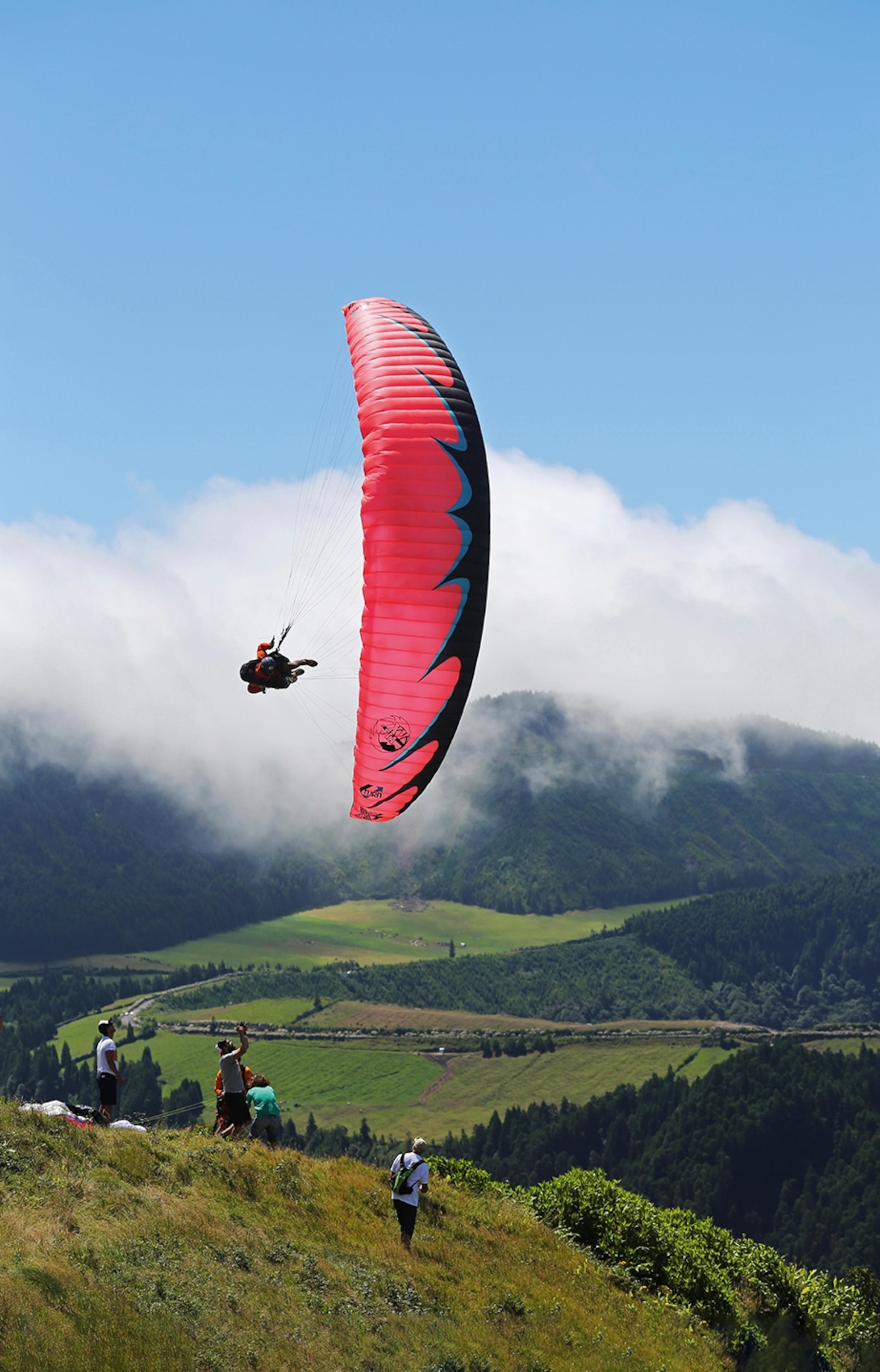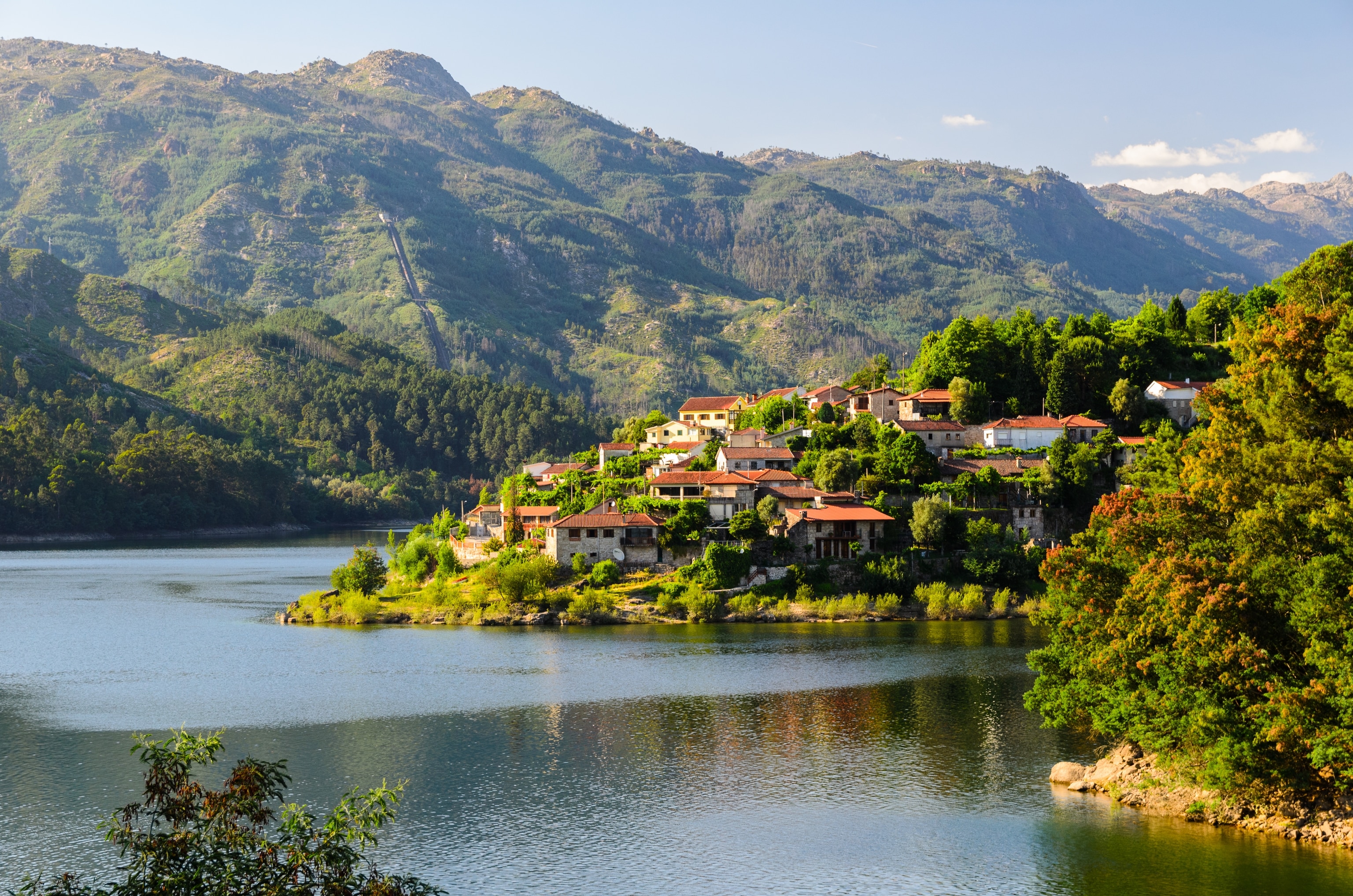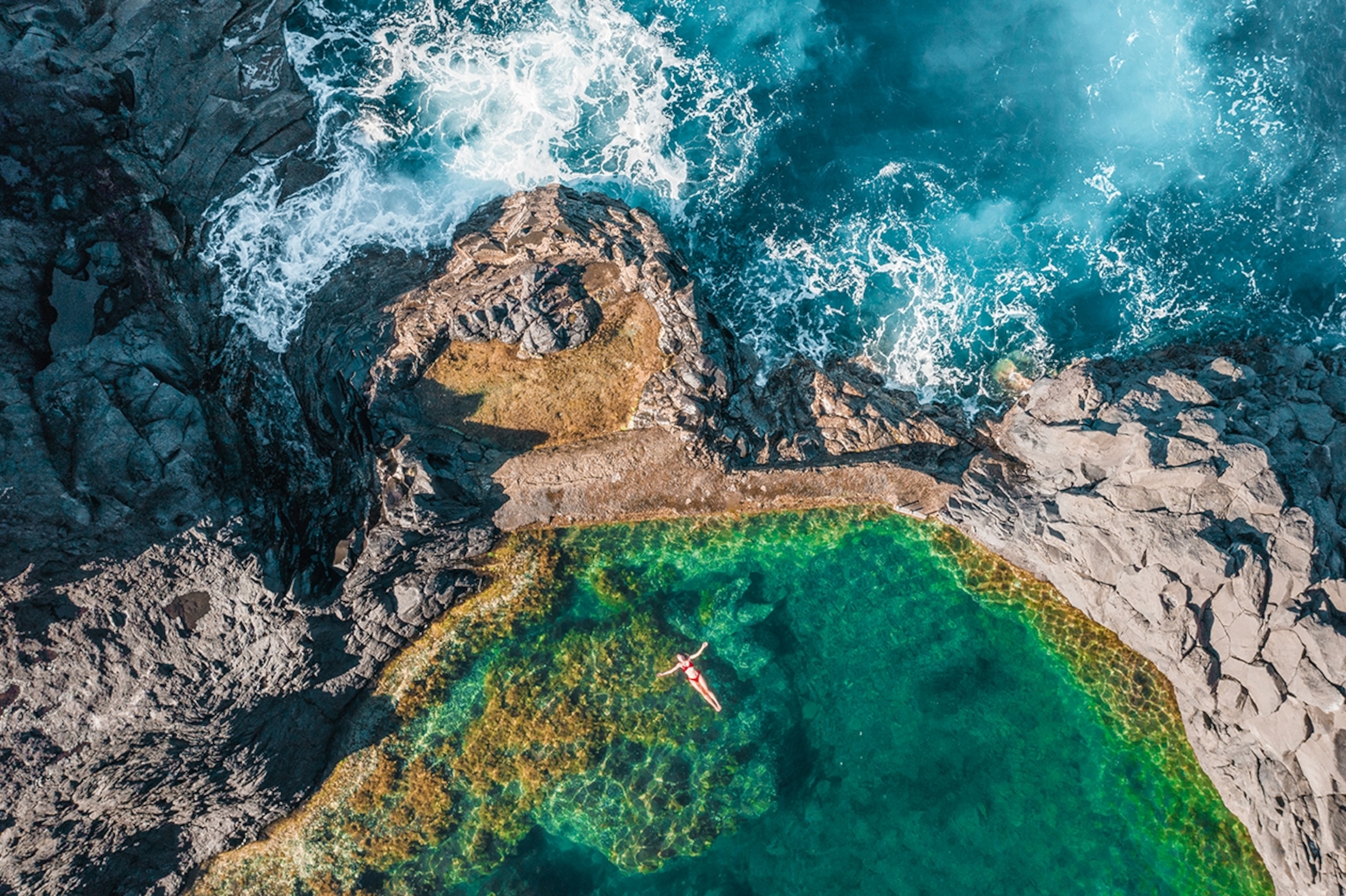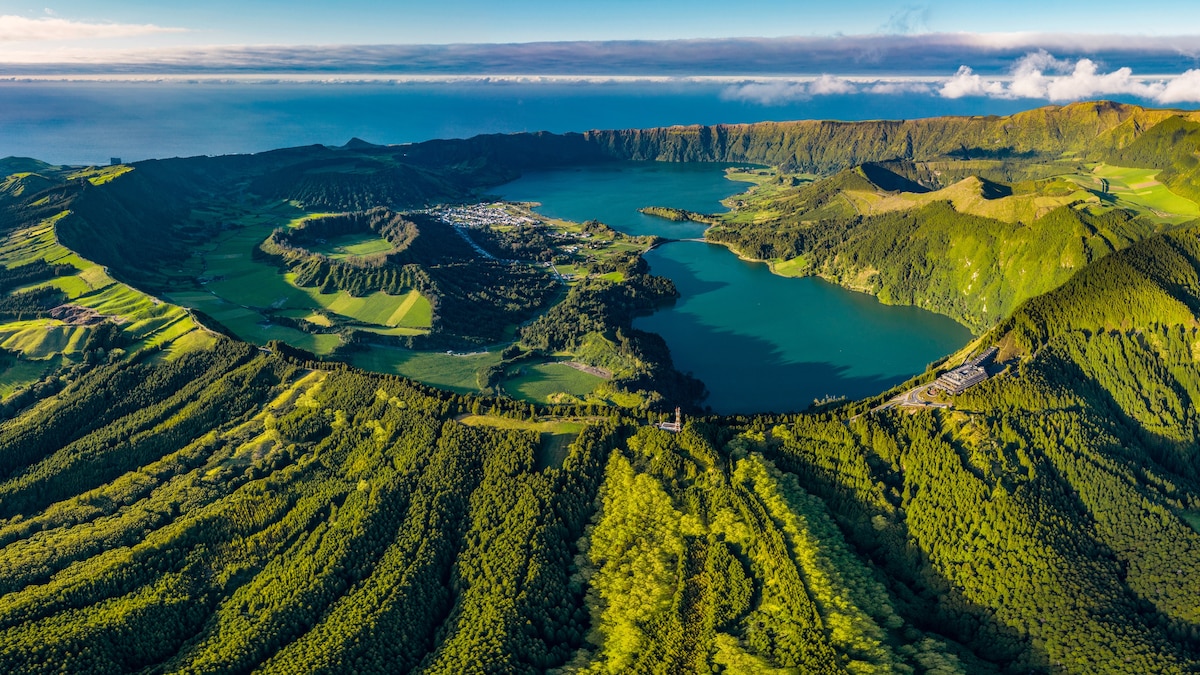Many travellers never venture beyond Portugal’s famed beaches — but away from the coast, there’s a world of rugged nature and rare wildlife to explore. From hiking along a riverside gorge to exploring the country’s only national park, these alternative adventures reveal raw, elemental landscapes, guided by local experts and your own sense of daring. Here’s how to experience Portugal’s wild side.
1. Explore the mountains
In Portugal’s mountainous north, just over an hour’s drive inland from Porto, Arouca is carving out a reputation as a destination for outdoor adventure. At the centre of the action is the Passadiços do Paiva, a 5.4-mile wooden walkway that turns 10 this year. Anchored to the craggy gorge of the Paiva River, the trail begins at Areinho and ends at Espiunca, threading through ancient woodland and outcrops of schist and quartzite. With nearly 2,000 feet of elevation gain, it’s best tackled early in the day and at a steady pace, especially during the warmer months.
This is the flagship route through the Arouca UNESCO Global Geopark, a protected area spanning 127 square miles and home to more than 40 designated geosites, including giant trilobites and ‘birthing stones’ — rocks that seem to ‘give birth’ to smaller ones in a rare geological phenomenon. Along the way, walkers pass river beaches such as Vau and Areinho — ideal for swimming in summer — and interpretation panels that explain the area’s unusual geology, including fossil-rich strata dating back over 450 million years.

The Passadiços do Paiva walkway follows the river past waterfalls and gorges.
Photograph by Karolina Wiercigroch

Paragliding near the island of São Miguel in the Azores.
Photograph by Alamy
2. Paddle under the stars
As dusk enfolds at the Alqueva Reservoir in eastern Alentejo, canoes slip silently across dark, mirror-still waters. Adventure company Break! offers travellers the chance to paddle under crisp constellations in Europe’s first official Starlight Tourism Destination. Alternatively, visit Dark Sky Alqueva’s observatory in the village of Cumeada, where experienced astronomers point out nebulae, star clusters and distant galaxies using powerful telescopes and laser pointers.
3. Take to the skies
Tea plantations, calderas and the turquoise crater lakes of Sete Cidades colour the cartography of São Miguel in the Azores when witnessed from above. Run by Azores GPS, tandem paragliding flights launch, bird-like, from the coastal cliffs, harnessing thermals rising off the island’s volcanic flanks. The silence is profound — just the wind and the cries of wheeling shearwaters below. For an added thrill, paramotor flights use a small engine to reach higher altitudes and cover more ground. Either way, it’s a surreal, slow-motion ride over some of Portugal’s wildest terrain.
4. Discover a national icon
Deep in Peneda-Gerês, Portugal’s only national park, weather-beaten Land Rovers rattle through ancient forests and around granite outcrops. This northern region, where Iberian wolves still roam, is a tangle of Roman roads and forgotten villages. With Gerês Equi’Desafios, travellers can choose an all-day 4WD tour or saddle up for a horse trek, led by local guides who know the rhythms of the land. Along the way, expect to pass wild Garrano ponies, waterfalls and crumbling espigueiros — traditional granaries raised on stone stilts.

Peneda-Gerês National Park spans 269 square miles, a rugged expanse along the Spanish border.
Photograph by AWL Images

The granaries of Soajo near Peneda-Gerês National Park.
Photograph by AWL Images
5. Parachute over plains
From 9,000 feet, the patchwork of olive groves and cork forests around Évora can look almost like an abstract painting. Then the plane door opens and the landscape comes sharply into focus. Tandem skydiving with Skydive Portugal begins with an exhilarating 25-second plunge and ends with a five-minute canopy descent across the sunlit plains. This is one of Portugal’s most established drop zones, staffed by multilingual instructors and open year-round. No experience is needed — just a little courage and strong ankles for landing. Upgrade to the Premium Package to jump from 15,000 feet, with 65 seconds of freefall at a breath-stealing 125mph.
6. Go chasing waterfalls
Madeira’s volcanic spine is riddled with narrow river gorges — places where sunlight barely reaches the floor and every surface glistens with spray. Go Explore Madeira guides adventurers into these steep, fern-draped ravines, where they’ll scramble down slick basalt and muster the courage to jump into the deep, glassy pools. On the beginner-friendly Porto Novo–Camacha route, with a starting point not far from Funchal, travellers slip into wetsuits and abseil down polished rock chutes shaded by laurel and eucalyptus. Expect a physical challenge with seasoned guides and a constant, soothing soundtrack of rushing water.

Madeira is dotted with natural swimming pools, formed from volcanic rock.
Photograph by Getty Images
7. Meet giants in the deep
The waters off Pico, the second-largest island in the Azores, plunge steeply into submarine canyons, making them fertile ground for cetacean encounters. Sperm whales patrol these depths year-round, while spring brings fin, blue and sei whales. Local operators Espaço Talassa and CW Azores conduct marine biologist-led excursions, blending scientific rigour with deep respect for the animals. Sightings unfold under wide skies — dolphins riding the bow, a tail fluke slipping beneath the surface — and each trip includes interpretive briefings and hydrophone listening when conditions allow.
To subscribe to National Geographic Traveller (UK) magazine click here. (Available in select countries only).
